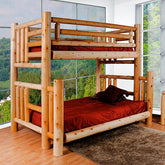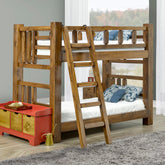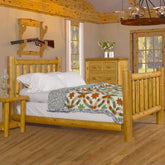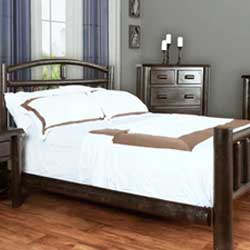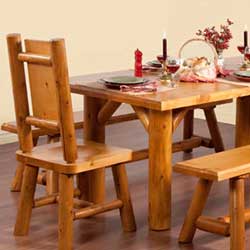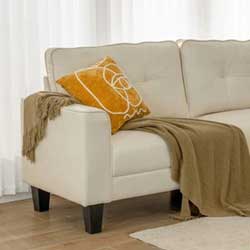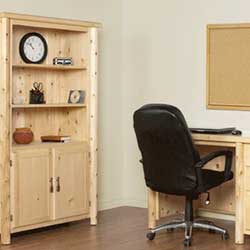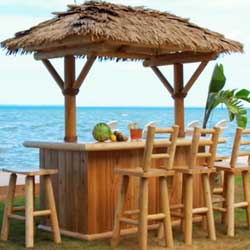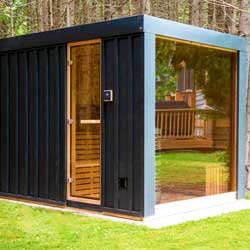Tips and rules for selecting colours for your canoe furniture
We have a few “rules” for colours, and another few “recommendations” that are really important to know before purchasing any of our canoe shelves or canoe tables.
Mix and match your colours, but not your stains for your canoe furniture
The canoe shelf was intended to have one STAIN and one PAINT. With two stains, it looks really incomplete. The accent from the paint adds so much more to the grooves from the stain.
Woods stains offer a nice overlaying colour, while not hiding the natural wood lines of the furniture. We always say, you’re paying for really high-quality wood for your furniture, make sure you’re not covering up the quality of the wood with paint! Paint might make it look like any furniture or composite alternative you can get from a place that imports their raw materials from their megafactories in eastern Europe. We pride ourself in having CANADIAN furniture with CANADIAN wood.
That being said, two stains together often clashes, and does not look nearly as good as choosing a stain for the bulk (interior) of the canoe shelf, and paint for the outside and maybe even the drawers/doors. Our highest recommendation is to have a premium STAIN on the inside, and a PAINT on the outside. We call this “Two-Tone”.


Singular colours look really good too!
We also fully recommend having one solid colour stain, if you like it better than the two-tone. Make sure you don’t choose one paint though, again, you don’t want to cover up this beautiful Canadian wood!
Clear coat is the most popular stain. It’s not “premium”, but rather a veneer or lacquer that gives the the furniture an everlasting gloss that protects it from years of dust and use, looks nice, and blends well with any and all colours in your house. Since it’s just a gloss, not a colour, the natural colour of the wood remains.

How we professionally stain the furniture
There are many steps to making sure your furniture is properly stained with consistency and without any drip marks.
Our steps for STAINS are: spray stain, wipe off, spray sealer, sand, spray lacquer
Our steps for PAINTS are: spray paint, clear sealer, sanded, tinted sealer , sanded, lacquer
We always add at least three coats when we professionally stain our furniture. We use an industrial staining booth machine. You can think of it as a pizza oven with a conveyer belt, but instead of pizza it's the furniture, and instead of heat it's paint guns.


When you select a PAINT
We always spray it with the paint, let it dry for a few hours, and then spray a clear sealer, a second layer of tinted sealer, and then we let it dry again. We then sand it to make sure it's even, and finally seal it with a lacquer so that it lasts longer. If you select CLEAR COAT, it's the exact same process without the first application of paint, so it's three coats instead of four.
When you select a STAIN
We always stain it with our premium coat first, let it dry, add a coat of clear on top of that, sand it after it dries, and then spray a third coat of lacquer. It’s more labour intensive and the materials are more expensive, that’s why it’s called “Premium stain” compared to the clear coat.

Why not stain it yourself?
For any of our furniture, we understand that people want to order unfinished furniture. If you have a specific colour you want to stain or paint our furniture with to match your home perfectly, we strongly encourage that! It will probably also save you money! Selecting one of our stains can sometimes be hundreds of dollars in addition to your order. The reason for that is it takes a lot of labour! We professionally stain our furniture with a stain gun so that it’s even with no brush lines, so we’ll probably do a better job than you - no offence 😉
How about leaving it unfinished?
Unfinished furniture has a few disadvantages.
First, it will deteriorate quicker. It will grey over time, and begin to slightly crack because of the moisture in the air. We use the best quality Grade-A wood, but we can’t help that the natural resource wants to decay over time. We can however help to reserve the natural wood with a little bit of lacquer to keep the wood from exposure - air, moisture, dust, etc.
The second disadvantage is that it doesn’t look as nice. But that’s a bit subjective. I like the idea of mixing and matching with two tones, or just to have a solid stain to accent the beautiful Canadian pine.
Of course, the main advantage is price. Of course selecting unfinished furniture is less expensive, so there is a very good reason to choose not to finish your furniture! It’s completely up to you.




